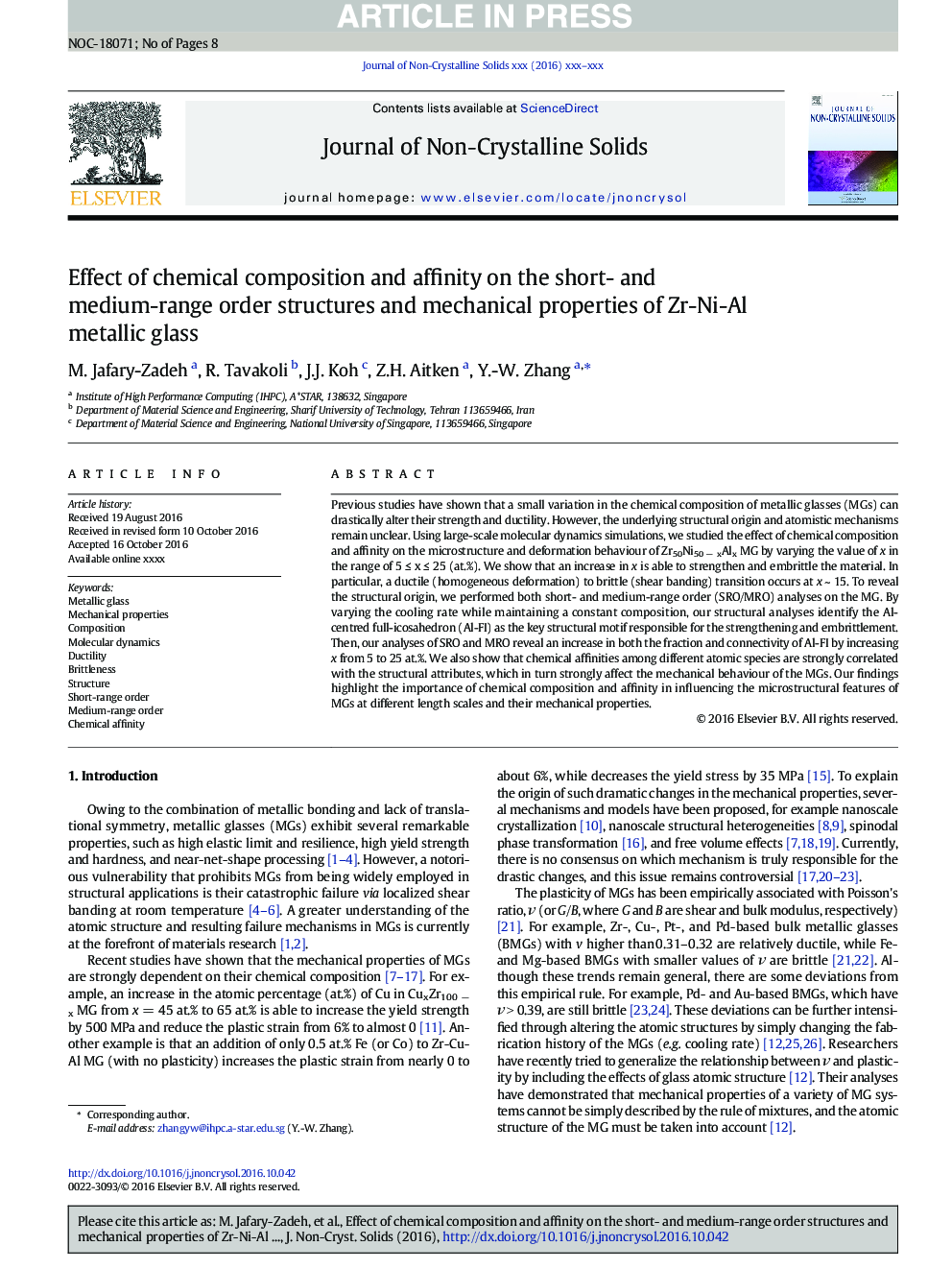| Article ID | Journal | Published Year | Pages | File Type |
|---|---|---|---|---|
| 5441383 | Journal of Non-Crystalline Solids | 2017 | 8 Pages |
Abstract
Previous studies have shown that a small variation in the chemical composition of metallic glasses (MGs) can drastically alter their strength and ductility. However, the underlying structural origin and atomistic mechanisms remain unclear. Using large-scale molecular dynamics simulations, we studied the effect of chemical composition and affinity on the microstructure and deformation behaviour of Zr50Ni50 â xAlx MG by varying the value of x in the range of 5 â¤Â x â¤Â 25 (at.%). We show that an increase in x is able to strengthen and embrittle the material. In particular, a ductile (homogeneous deformation) to brittle (shear banding) transition occurs at x ~ 15. To reveal the structural origin, we performed both short- and medium-range order (SRO/MRO) analyses on the MG. By varying the cooling rate while maintaining a constant composition, our structural analyses identify the Al-centred full-icosahedron (Al-FI) as the key structural motif responsible for the strengthening and embrittlement. Then, our analyses of SRO and MRO reveal an increase in both the fraction and connectivity of Al-FI by increasing x from 5 to 25 at.%. We also show that chemical affinities among different atomic species are strongly correlated with the structural attributes, which in turn strongly affect the mechanical behaviour of the MGs. Our findings highlight the importance of chemical composition and affinity in influencing the microstructural features of MGs at different length scales and their mechanical properties.
Keywords
Related Topics
Physical Sciences and Engineering
Materials Science
Ceramics and Composites
Authors
M. Jafary-Zadeh, R. Tavakoli, J.J. Koh, Z.H. Aitken, Y.-W. Zhang,
